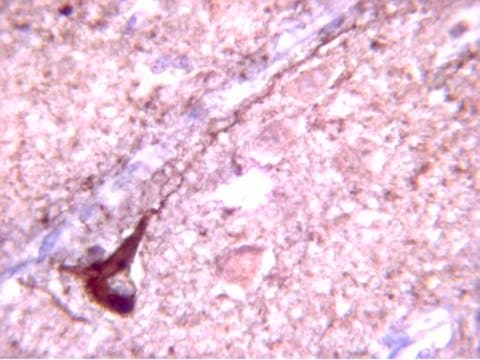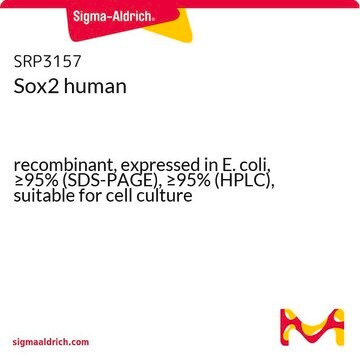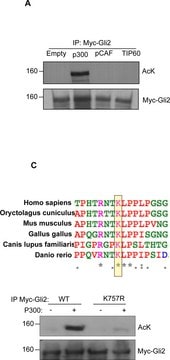SRP5089
TBK1, active, GST tagged human
PRECISIO® Kinase, recombinant, expressed in baculovirus infected Sf9 cells, ≥70% (SDS-PAGE), buffered aqueous glycerol solution
Synonym(s):
FLJ11330, NAK, T2K
Sign Into View Organizational & Contract Pricing
All Photos(2)
About This Item
UNSPSC Code:
12352204
NACRES:
NA.32
Recommended Products
recombinant
expressed in baculovirus infected Sf9 cells
product line
PRECISIO® Kinase
Assay
≥70% (SDS-PAGE)
form
buffered aqueous glycerol solution
specific activity
259-351 nmol/min·mg
mol wt
~105 kDa
NCBI accession no.
shipped in
dry ice
storage temp.
−70°C
Gene Information
human ... TBK1(29110)
General description
TBK1 (TANK-binding kinase 1) gene is located on human chromosome 12q14. It is a serine/threonine protein kinase. The encoded protein has a kinase domain, a ubiquitin-like domain, an α-helical scaffold dimerization domain and a small adaptor-binding motif.
Biochem/physiol Actions
TBK1 (TANK-binding kinase 1) can phosphorylate numerous proteins, like optineurin, P62 (sequestosome 1) and interferon regulatory factor 3 (IRF3). It participates in various signaling pathways, namely, autophagy, antiviral and antibacterial innate immunity responses, oncogenic transformation and expression of inflammatory mediators. Mutations in this gene are linked with sporadic amyotrophic lateral sclerosis (SALS), familial ALS (FALS) and frontotemporal dementia. Defects in TBK1 suppresses autophagy, causing the accumulation of damaged mitochondria, thereby leading to neurodegeneration. Alteration in the copy number of TBK1 gene is associated with normal tension glaucoma. TBK1, also known as NAK or NFκB-activating kinase, is an upstream protein kinase that can phosphorylate and activate the IkB kinases. Activation of IkB kinases allows the phosphorylation of IkB protein which is then degraded via the ubiquitination pathway. This mechanism allows the activation of the NFκB transcriptional complex. TBK1 is a specific upstream regulator of IkB kinases and can also interact and the IkB protein TANK. TBK1 is a component of the virus-activated kinase that phosphorylate IRF3 and IRF7 allowing their dimerization and translocation to the nucleus, where they induce transcription of interferon.
Physical form
Supplied in 50mM Tris-HCl, pH 7.5, 150mM NaCl, 10mM glutathione, 0.1mM EDTA, 0.25mM DTT, 0.1mM PMSF, 25% glycerol.
Preparation Note
after opening, aliquot into smaller quantities and store at -70 °C. Avoid repeating handling and multiple freeze/thaw cycles
Legal Information
PRECISIO is a registered trademark of Merck KGaA, Darmstadt, Germany
Storage Class Code
10 - Combustible liquids
WGK
WGK 1
Certificates of Analysis (COA)
Search for Certificates of Analysis (COA) by entering the products Lot/Batch Number. Lot and Batch Numbers can be found on a product’s label following the words ‘Lot’ or ‘Batch’.
Already Own This Product?
Find documentation for the products that you have recently purchased in the Document Library.
Loss of TBK1 is a frequent cause of frontotemporal dementia in a Belgian cohort
Gijselinck I, et al.
Neurology, 85(24), 2116-2125 (2015)
Dynamic recruitment and activation of ALS-associated TBK1 with its target optineurin are required for efficient mitophagy
Moore AS and Holzbaur ELF
Proceedings of the National Academy of Sciences of the USA, 113(24), E3349-E3358 (2016)
Mutational analysis of TBK1 in Taiwanese patients with amyotrophic lateral sclerosis
Tsai PC , et al.
Neurobiology of Aging, 40, 191-e11-191-e11 (2016)
Confirmation of TBK1 duplication in normal tension glaucoma
Kawase K, et al.
Experimental Eye Research, 96(1), 178-178 (2012)
Sonia Sharma et al.
Science (New York, N.Y.), 300(5622), 1148-1151 (2003-04-19)
Rapid induction of type I interferon expression, a central event in establishing the innate antiviral response, requires cooperative activation of numerous transcription factors. Although signaling pathways that activate the transcription factors nuclear factor kappaB and ATF-2/c-Jun have been well characterized
Our team of scientists has experience in all areas of research including Life Science, Material Science, Chemical Synthesis, Chromatography, Analytical and many others.
Contact Technical Service







